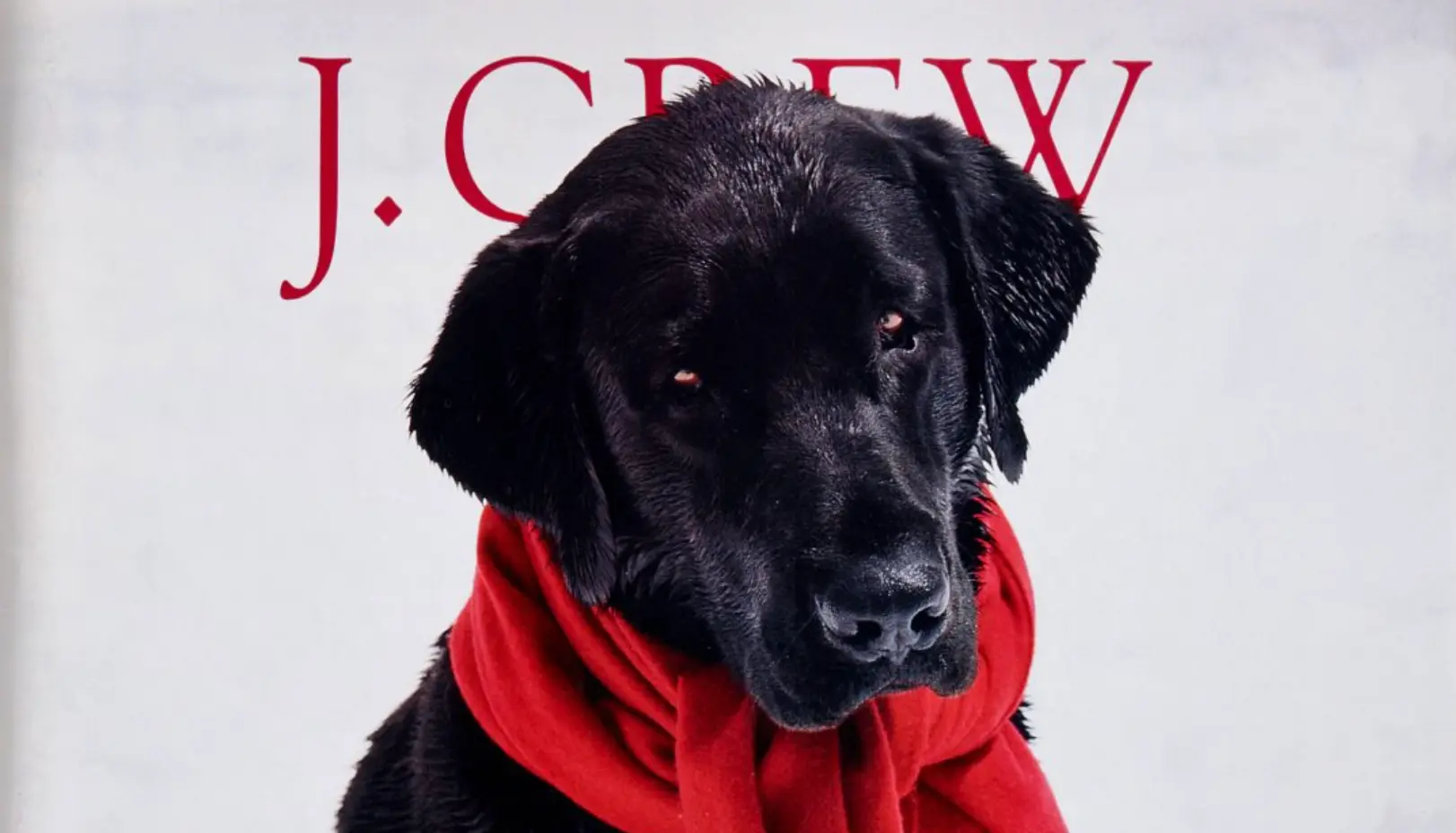The Most Successful Fashion Designers in History: Fashion's Most Influential Innovators
Updated on
Published on

It’s impossible to imagine the fashion universe without those standout creators who shape trends, spark revolutions, and dress us in everything from classic couture to edgy street style. If you’ve ever felt your heart flutter while flipping through a Vogue spread or watching runway footage from Paris, you already know the magnetic allure of the most influential fashion designers at work. These icons aren’t just decorative talents; they’re trendsetters who reshaped entire eras, from Coco Chanel’s groundbreaking take on modern elegance to Virgil Abloh’s fusion of streetwear and high-end luxury. Hop with us through the stories, impacts, and enchanting designs of some of the best fashion designers the industry has ever witnessed. Each of them, in their own flamboyant or understated way, earns a coveted position among the successful fashion designers who have left a permanent mark on how we think about clothes and self-expression.
Coco Chanel: A Daring Departure From Confinement
Our fashionable odyssey starts with Coco Chanel, the legendary French designer whose name is practically synonymous with ease and refined simplicity. Before Chanel emerged in the early 1900s, women’s apparel was pinned, corseted, and stifling. Then along came Coco, snipping away at those restrictive silhouettes and championing jersey fabric for soft, relaxed dresses. She intuitively knew that women were hungry for more freedom—both physically and symbolically. The result? The famed little black dress, now an absolute staple in every wardrobe, but at the time an innovative twist on what was considered mourning attire.
She also popularized the Chanel suit: a sleek, collarless jacket paired with a simple skirt, radically different from the corsetry of just a generation before. It wasn’t just about women moving more easily; it was about women living more boldly. Chanel’s empire, still thriving with billions in annual revenue, stands as proof that she is undeniably among the most influential fashion designers to ever grace the scene. From the double C logo to that ubiquitous No. 5 perfume, her brand’s DNA still reads “modern luxury.” If you scan your closet, chances are you have something—a boxy blazer, a clean black dress—that’s shaped by Chanel’s philosophy. We can’t thank her enough for making it socially acceptable to put comfort and style on the same pedestal.

Christian Dior: The Blossoming of Post-War Glamour
Step into the post-World War II period and everything changes again, courtesy of Christian Dior. When his “New Look” debuted in 1947, the fashion press nearly fainted. Picture tiny cinched waists and flaring skirts that used heaps of fabric—a startling contrast to the war’s rationing era. That was the kind of scandal only the best fashion designers can create: some criticized the look as wasteful, others rejoiced that feminine curves and polished silhouettes were making a comeback. In a matter of months, “New Look” dresses sold out among luxury clients worldwide, and critics heralded Dior’s approach as a brilliant renaissance for Parisian couture.
By 1950, business soared, with Dior’s brand accounting for a large chunk of France’s fashion exports. If Coco Chanel had introduced minimalism and independence for women’s wear, then Dior reintroduced romantic opulence, letting women revel in a playful, sophisticated silhouette. The House of Dior quickly secured its place among the successful fashion designers influencing future generations. Even creative geniuses like Yves Saint Laurent started under Dior’s wing, ensuring the label’s focus on hyper-femininity and architectural shapes became a core part of modern design ideology.

Yves Saint Laurent: The Modern Tuxedo and Beyond
Few names flash across a fashion enthusiast’s mind as quickly as Yves Saint Laurent. This young prodigy cut his teeth at Dior before forming his own line. He made waves with “Le Smoking,” a tuxedo for women, introduced in 1966—something that felt downright rebellious at the time but ended up defining a new wave of confident dressing. Data from upscale retailers in the 1970s showed a spike in tailored evening separates for women, largely attributed to YSL’s tuxedo phenomenon. He also played with color-block shifts, transparent blouses, and bohemian inspirations, bridging high fashion and ready-to-wear. By weaving in influences from art, street culture, and exotic locales, Saint Laurent pulled the runway closer to real life.
That adventurous streak—throwing pop art or safari jackets into the collection—made him one of the most influential fashion designers in melding conceptual couture with daily life. He also ushered in the notion of true brand expansions: YSL fragrance, accessories, cosmetics. The marketing data from the ’80s reveals that the House of Saint Laurent turned into a lifestyle, not just a label, proving the power of creative vision in building an empire. If you love tailored blazers, color-pop dresses, or luxurious but nonconformist looks, you owe a silent “merci” to YSL’s pioneering eye.

Karl Lagerfeld: An Endless Stream of Reinvention
Picture a designer in dark sunglasses, powdered hair, and fingerless gloves. Yes, we’re talking about Karl Lagerfeld, the formidable multi-tasker who juggled roles at Chanel, Fendi, and his own eponymous brand—while always retaining that signature aura of mystery. He took over Chanel in 1983, during a period when Coco’s original brand was fading from mainstream excitement. Lagerfeld revived it by clashing classic tweeds with splashy accessories and sensational show staging. Market research from that decade recorded a massive jump in Chanel’s retail presence, confirming Lagerfeld’s approach was not just hype but a genuine commercial success.
Then there’s Fendi, where Lagerfeld introduced iconic fur designs and the double “F” logo mania—expanding that Italian label’s renown. Among the successful fashion designers, few have matched his volume of collaborations, from Coca-Cola bottles to edgy street lines. Undeniably prolific, Lagerfeld orchestrated an average of over a dozen collections a year. The secret sauce lay in his willingness to retool, revitalize, and reinterpret heritage. He left behind a blueprint for how a venerable house could be nostalgic yet relevant, proving that heritage and contemporary flair can (and should) coexist.

Gianni Versace: Rock-Star Opulence and Print Galore
If the glitzy, celebrity-studded side of fashion is your guilty pleasure, Gianni Versace was your dream come true. Starting in the late 1970s, Versace’s brand soared to global prominence in the ’80s, built on screamingly bold prints, baroque swirls, and gold medusa medallions that exuded a sassy opulence. Media watchers of that era reported that Gianni’s runway shows turned into must-see events, featuring supermodels who would soon become household names—Naomi Campbell, Linda Evangelista, Christy Turlington. Style surveys from that time record how these flamboyant designs appealed to new money, rock stars, and daring socialites who relished color and flair.
Sales soared, with brand expansions into accessories and fragrances that displayed that same over-the-top vibe. By 1995, the Versace brand had become one of the top-grossing Italian fashion houses, especially in the US and Asia. Despite Gianni’s tragic murder in 1997, his sister Donatella carried on the label’s flashy DNA. The brand remains an icon for those seeking extravagance. Ask anyone who loves patterned shirts or a high-voltage runway spectacle: Versace stands among the best fashion designers to ever fuse pop culture with runway drama.

Tom Ford: Seductive Minimalism That Changed the Industry
When you think about unstoppable, sex-charged glam in the 1990s, you can’t ignore Tom Ford. His revival of Gucci is the stuff of legend. Around 1990, Gucci was floundering, teetering on the brink of irrelevance. Ford took the creative director post and catapulted the brand from an estimated $200 million in sales to $3 billion by the decade’s end. “Gucci fever,” as the press called it, caught on with celebrities, fashion editors, and everyday shoppers. Suddenly, daring satin shirts and curve-hugging velvet pants were haute must-haves, reestablishing Gucci as a global powerhouse.
After conquering Gucci, Tom Ford stepped in at Yves Saint Laurent, imbuing that house with a modern-luxe vibe. Later he launched his own label, spanning menswear, womenswear, accessories, and even films. According to analyses of brand data, the Tom Ford name quickly rose to elite status, with consumers praising the sleek lines, bold silhouettes, and provocative advertising. He’s the living blueprint for how a single creative mind can resurrect dying labels and then spearhead one of the most sought-after lines in the world, making him a mainstay among successful fashion designers who transcend brand boundaries.

Alexander McQueen: Poetry and Provocation on the Catwalk
Alexander McQueen was the wizard of dark romanticism, swirling theater, punk energy, and pristine tailoring into mesmerizing runway shows. He first made his name on London’s Savile Row, honing the razor-sharp cuts that later defined his brand. When he launched his own label, the press gushed over the drama: think models in spray-painted dresses by robots, catwalks turned into chessboards, or mesmerizing smoke effects. According to event data from the ’90s, McQueen’s shows—often staged in unconventional venues—drew the biggest crowds at London Fashion Week.
Commercially, McQueen overcame skeptics who pegged him as purely avant-garde. Luxury retailers noted consistent sell-outs of his well-cut blazers and the iconic skull-print scarves. When the Gucci Group (now Kering) acquired a majority stake, McQueen scaled from niche acclaim to global distribution. His untimely death in 2010 left the fashion world mourning the loss of one of the best fashion designers who bridged art, performance, and impeccable garment construction. His label, now led by Sarah Burton, ensures that the late designer’s darkly alluring style continues casting a spell on runway enthusiasts.
Jean Paul Gaultier: Liberated Couture with a Cheeky Twist
Ever heard someone called the “enfant terrible” of fashion? That’s Jean Paul Gaultier. Rising in the 1980s, he whipped up outrageous ideas—cone bras, men’s skirts, provocative ad campaigns—that combined high craftsmanship with street influences. Despite the shock factor, his brand soared. By the 1990s, Gaultier was balancing haute couture lines and widely sold fragrances (like the iconic torso-shaped bottles) that achieved blockbuster sales. Market data shows Gaultier fragrances often landed in top-selling lists across Europe, confirming the brand’s mainstream clout.
Yet “mainstream” never meant “tame” for Gaultier. He continued staging offbeat runway narratives—pirates, punk references, body positivity—well before inclusivity became a buzzword. He also challenged gender norms through androgynous styles, reinforcing that clothing is a playground for self-expression. Even when Gaultier stepped back from regular ready-to-wear lines, his haute couture collections soared in popularity. Among the most influential fashion designers, Gaultier remains an unrepentant rule-breaker whose presence lingers in the industry’s ongoing quest for eclectic, inclusive flair.

Azzedine Alaïa: The Sculptor of Divine Silhouettes
While many in the fashion world chase headlines, Azzedine Alaïa built a legacy on precision. Known as the “King of Cling,” he used formfitting silhouettes to celebrate curves in a way that was simultaneously daring and elegant. Although he didn’t stage chaotic runway shows or push giant marketing campaigns, insiders and top models adored him. Retail data from the ’80s and ’90s indicates his small but devoted customer base often paid a premium for dresses that flattered like nothing else on the market. Alaïa’s approach was slow, quiet, and timeless, favoring perfect seams over fleeting trends.
Over time, celebrities like Grace Jones, Naomi Campbell, and Tina Turner became evangelists for his body-conscious creations. Rather than releasing new collections on a strict calendar, he often worked at his own pace, unveiling pieces only when they were up to his exacting standards. This made him the ultimate quiet rebel among successful fashion designers—someone who never chased hype but earned unwavering respect. Even after his passing, the House of Alaïa stands as an emblem of disciplined, everlasting style, free from seasonal gimmicks.

Martin Margiela: Deconstruction and Anonymity as Art
If minimal labels or unbranded clothing appeal to you, tip your hat to Maison Margiela. Founded by the mysterious Martin Margiela, the brand championed deconstruction long before it was trendy. Margiela turned seams, raw hems, and inside-out garments into statements of authenticity. Observers in the ’90s saw how the brand’s conceptual runway shows—a single piece repeated in multiple forms, masked models, or even shows that guided editors to deserted locations—contrasted with mainstream extravaganza. Yet, ironically, it attracted a cult following, with certain pieces earning near-instant sellouts in specialized boutiques.
Margiela’s approach redefined how we see branding: white labels with four stitches, little or no logos, and the idea of letting the clothes speak for themselves. In an industry craving big names in giant neon letters, Maison Margiela was the ultimate anti-establishment stance—yet ironically, it became iconic. That duality places Margiela among the most influential fashion designers for subverting the system while quietly winning hearts. Even when the founding designer left, the house retained the DNA of reusing, reassembling, and rethinking clothing from the inside out.

Virgil Abloh: Streetwear and Luxury in Perfect Harmony
Lastly, we speed into the 21st century with Virgil Abloh, who soared from DJing and architecture training to leading men’s design at Louis Vuitton. He first launched Off-White, specializing in bold quotation marks, diagonal stripes, and a union of high fashion with street culture. Off-White’s collabs, particularly with Nike, fueled sneaker mania, with data from resale platforms indicating that some Abloh-designed sneakers resold for over four times their original retail price. This alone testifies to the brand’s hype-driven value.
When Louis Vuitton named him as men’s artistic director in 2018, it was more than a style shift; it was a cultural moment. Abloh, one of the few Black designers in a major European luxury house, championed inclusive casting and references to hip-hop and youth culture. Sales soared, and runway reviews extolled how he brought a new generation to the esteemed brand. Even after his untimely death in 2021, Abloh’s approach remains a guiding principle for brands wanting to marry street influences with high-end identity—forever enshrining him among the best fashion designers who proved that contemporary wardrobes no longer see boundaries between sportswear and couture.

A Legendary Tapestry of Inspiration
This whirlwind look at the most influential fashion designers reveals a tapestry that stitches together Coco Chanel’s liberation, Dior’s post-war romanticism, Alexander McQueen’s dramatic pageantry, and Virgil Abloh’s seamless street-luxe hybrid. Each one belongs on the short list of successful fashion designers because they not only shaped fleeting trends but also rewrote style’s unwritten rules. Some adored scandal and spectacle—like Jean Paul Gaultier or Gianni Versace—while others, like Azzedine Alaïa, preferred discreet excellence. Yet all of them, in their own ways, challenged the status quo.
Their legacies echo in every runway show, department store, or digital fashion site we encounter. Dior’s hourglass lines still inform how we see classic femininity, just as Chanel’s jersey dresses remain a template for modern ease. Tom Ford taught us minimalism with a wink of seduction, and Karl Lagerfeld proved no brand is beyond resurrection if you have the imagination to reinvent. These best fashion designers are more than names etched on a label—they’re the pulse behind entire creative movements that continue to evolve. Just as the industry never stops innovating, we can be sure that the inspiration from these fashion giants lives on, forever shaping how we express ourselves through clothing.







